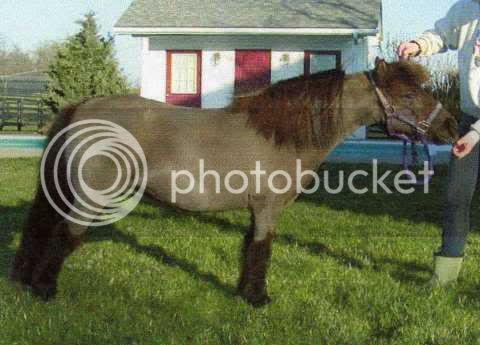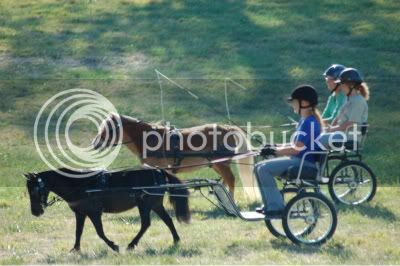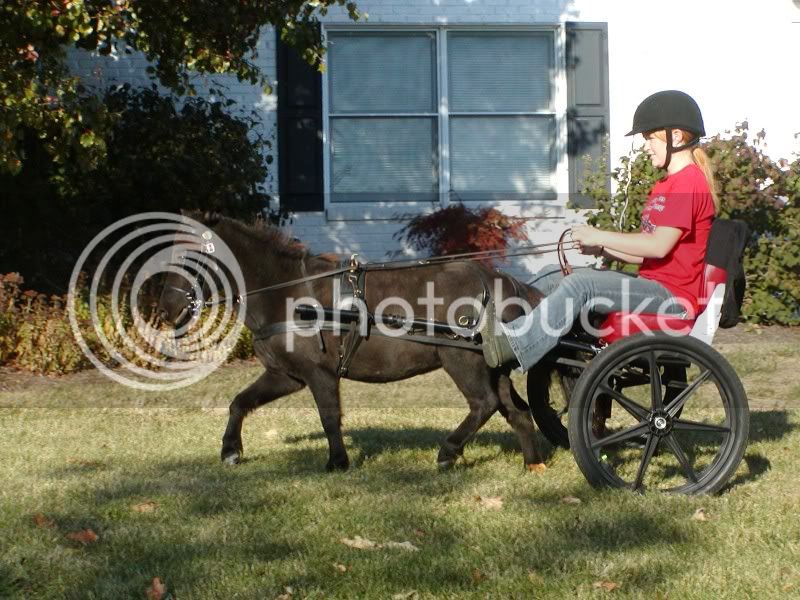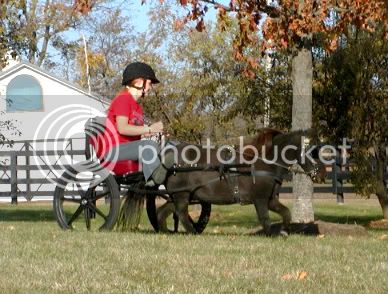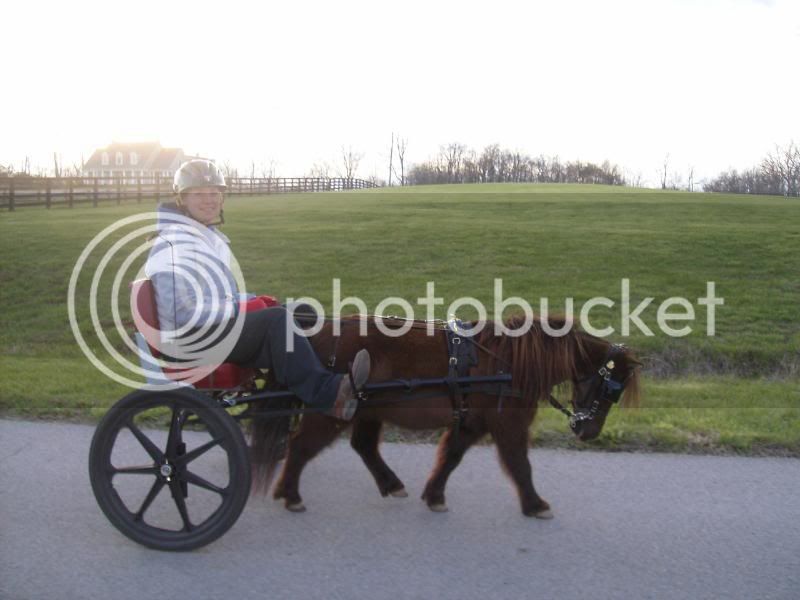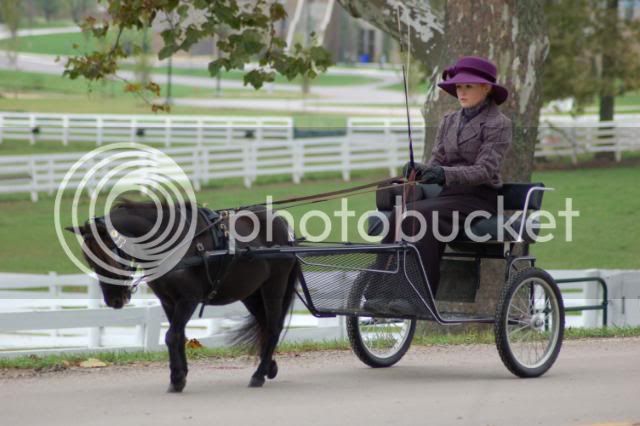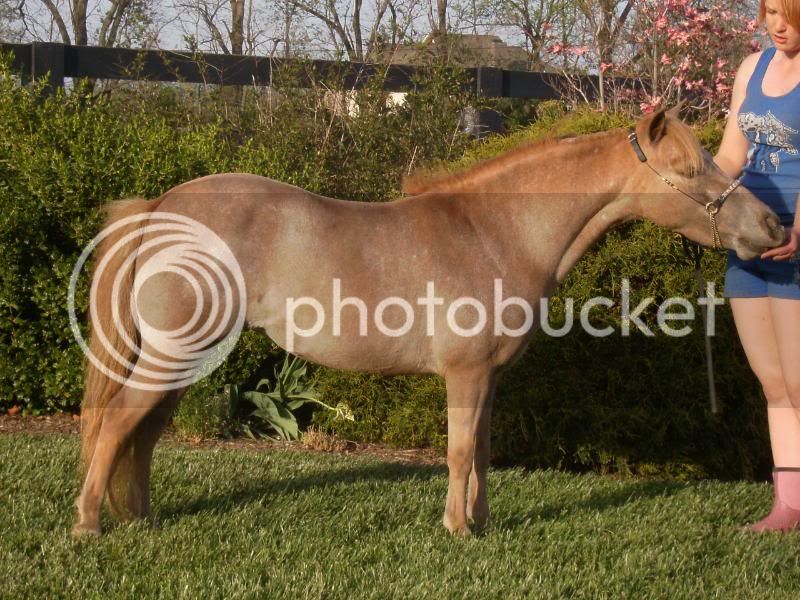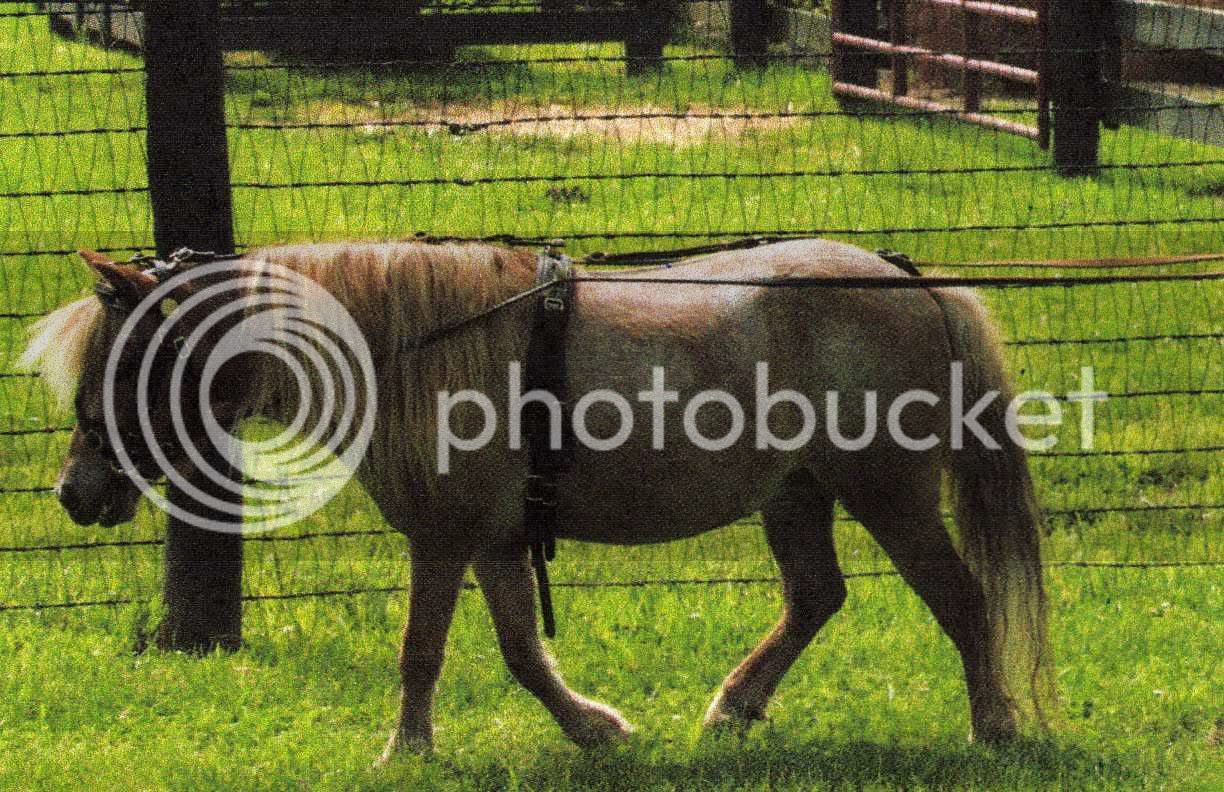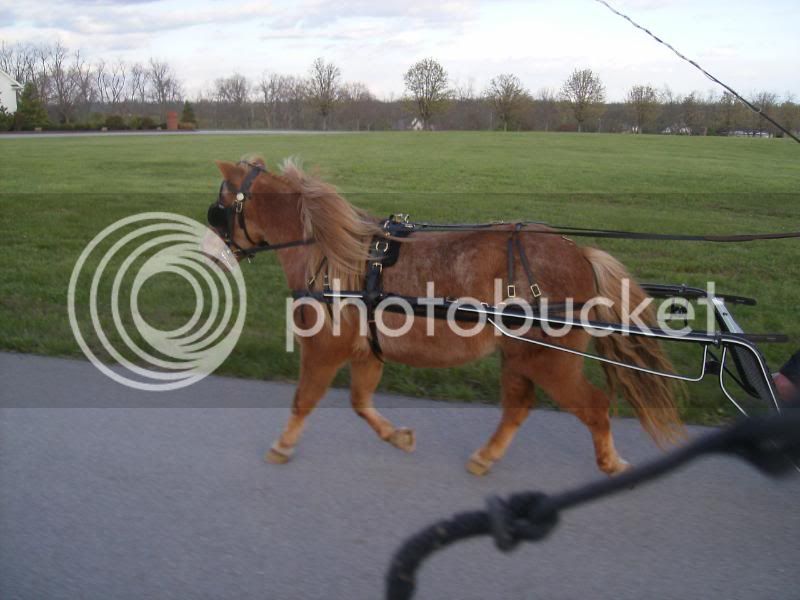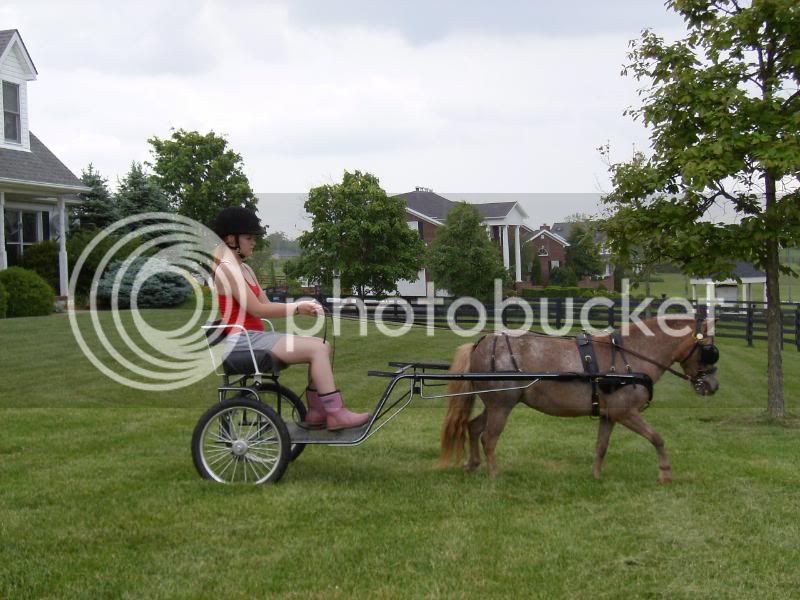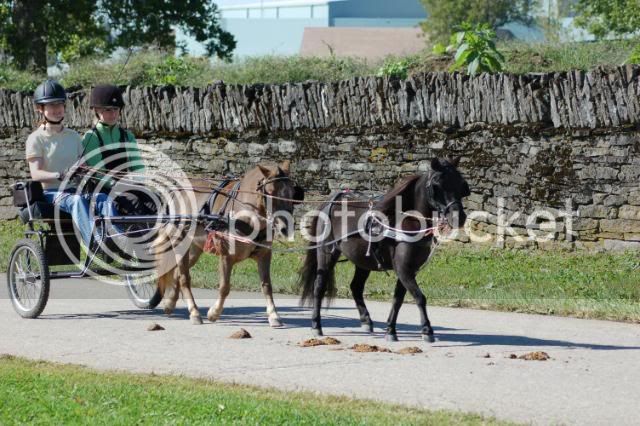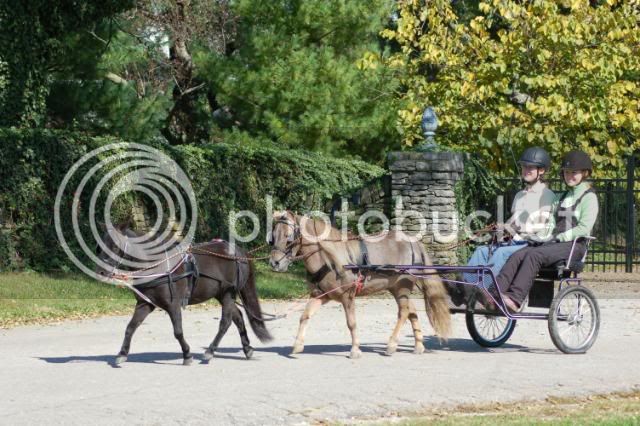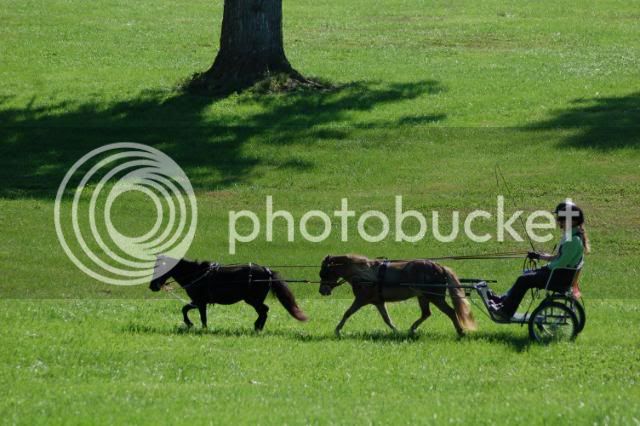BannerBrat
Well-Known Member
[SIZE=12pt] I'd love to see that Leia, I can't wait to watch you progress with your new boy.I'm not a great fan of fixed side reins as I feel they lack the sensitivity and give of a rider's hands but I do feel it's important to show the horse what we want in small steps before asking them for it in the cart. I frequently lunge my horses without any equipment to let them blow off steam and will sometimes use a lunge cavesson by itself to encourage the horse to tip his nose to the inside instead of getting resistant through his jaw, but I don't expect the horse will magically learn to stretch that way. Something has to show him the way to the ground and without long-lines of some sort attached that must be an auxillary rein such as a side rein or sliding side rein. Kody spent a lot of time with his nose to the ground naturally as he lunged but his weight was still on his forehand and he wasn't moving correctly despite the flexure of his neck. The addition of sliding side reins helped him learn to work through his back and find his balance a bit higher up. I have some photos of that show it well but unfortunately can't find them online at the moment. This is the closest I've got at the moment:
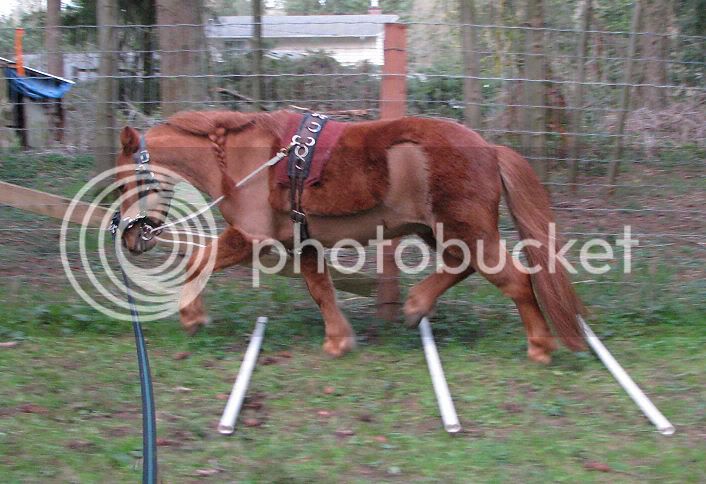
Both Mingus and Banner show good natural engagement and a talent for stepping up under themselves but neither horse (as pictured on this thread, not judging their current progress which of course we can't see) is getting off his forehand or using his neck. Jegrays' horses are doing so beautifully although as she comments they are a little tense through the neck and jaw as to be expected of 2 and 3 year olds just being introduced to such work. I would personally prefer to use sliding side reins at that stage so the horse can move his head around and find out for himself where his most comfortable posture is and how to balance but side reins definitely have their place. I would not hesitate to use one side rein at a time on the inside of the circle to help a young horse understand (in combination with a strong driving aid from the handler) how to give to the bit and begin bending. After that however I prefer the sliding side reins in combination with a lunging cavesson to show the horse how to use his whole body. That lovely vertical head position should come naturally as a result of the horse moving from back to front...to force them into that posture without the correct foundation often leads to foreshortening of the neck and lots of tension from jaw to lower back which defeats the purpose.
Mingus is quite capable of lovely correct round movement, I've seen him do it and I think he was just excited at the beach. All he needed was a firm work session with frequent soft transitions and a lot of bending and I think he would have come right back down and focused. Banner sounds a lot like both Mingus and Kody as far as his temperment and that type of horse does take a delicate hand and lots of creativity and patience to bring to full flower. It's worth it though! I agree that he could benefit from limited use of sliding side reins just long enough to show him how to use his topline. He's a thinking horse just like our other boys...he'll take it as a puzzle and soon figure it out without ever getting annoyed at his driver as he can see clearly that you're standing there in the middle of the circle not doing a thing.He's come a long way in his driving and is developing a powerful (and handsome!) musculature but he has not yet figured out how to truly work through his topline.
[SIZE=12pt]He doesn't seem to get annoyed with me with the sliding side reins. He accepts them, begrudgingly. He honestly seems to hate that they follow his mouth. I know that sounds dumb, but he does use his body very nicely with the sliding side reins, using his body well through his topline, unlike the pictures I posted. I don't think he drops his rear end yet though. But anyway, every once and a while he seems to get fed up with it & resists quite strongly. To the point where he starts to rear, not out of fear of being restrained just a whole lot ofat having those side reins on. Maybe I ought to really push him to work through it... can't hurt to try I suppose. He certainly is a special horse, I found him this morning acting like a bronc in his 12'x12' stall because he was bored and I was a 1/2 hour late. I'm sure you would love him Leia! He's got plenty of antics... I ought to write a book about him. [/SIZE]
[/SIZE]
I promise I'll post some photos of my horse for critique in a separate thread and pick him absolutely to pieces for you guys.It'll also be fun over the next two years to see if I can "walk the walk" as my almost-two year old naturally trails his hindquarters at a trot and tends to lock into an upheaded position and stay there. I'm looking forward to working with him and posting pictures as he hopefully learns to seek the bit and engage through the topline. We'll see!
Leia
[SIZE=12pt] I know that half cheeks are still pretty easy to pull through if you get a certain angle on them, a full cheek though would probably solve that. What are the advantages to lunging from the bit?[/SIZE]Sorry, was typing over time and missed the newest replies! Ashley, do you have any photos or video of exactly how Banner reacts when you use sliding side reins? Now I'm curious.[SIZE=12pt]No, I don't as of yet. But I'll see if I can get some. I tried to describe it in your above post...[/SIZE]
Patty Cloke's videos have the horse started out with one loose siderein on the inside, then adding a second rein on the outside and slowly tightening them over time. Yes, the inside rein is always at least one hole tighter than the outside to keep the horse bending. You do have to switch or adjust the reins when you switch directions.BannerBrat said:[SIZE=12pt] Do you adjust the side reins for the different bend of the circle? And change them for when you reverse? I'm guessing you use two side reins, is that how you start them out? Or just with one? Banner is in really good condition, and I'm thinking now we can really start making progress with retraining the right muscles. [/SIZE]
[SIZE=12pt]Thank you![/SIZE]
That's what the little "spoons" on a half-cheek bit are for.BannerBrat said:[SIZE=12pt] Just a wondering, do you have any problems with the bit being pulled through his mouth lunging like that? I haven't lunged that way because I worry that if whoever I was working was to spook they would pull the bit through their mouth and worsen the problem. [/SIZE]A full-cheek bit is also a good choice for such work as it not only can't be pulled through the mouth but applies gentle pressure to the outside that helps the horse understand what you're asking for.
Leia
[SIZE=12pt]Thank you jegray21, I get what you're saying. I may try that with my boy now that I know a bit more about it.You would want to adjust them based on the goal you are trying to achieve with the side reigns. If the horse is stiff to one side and he tends to face out then lengthen the outside side reign and shorten A LITTLE the inside..
In ace's case the side reigns are elastic and give him the give he needs..they are not there to HOLD the head down..just to be clear...I agree that they do not give as much as the reigns but will still argue that in the beginning a steady contact is helpful as long as they are not too short.
In the moment of the pic he is leaning on the bit and yes it is pulled through his mouth most of the time it sits right.
the half halt is a moment of POSITIVE tension the tells the horse yes go forward but up ward...I hold a fist and release...timing is everything in a half halt if you hold to long it will tighten the horse in mouth and neck..if it is not long enough the horse will consider it meaningless pulling on his bit. the other important point would be to be sure to keep the horse going forward through the half halt so they do not get short behind. That's how I was taught and so far it has worked.
not sure its the pic of my grey mare that I think showed up not sure...sorry for confusion on images...that shows how I transition them from just side reigns to steady reign contact...when she is solid in the contact of the reigns the side reins go away and she is steady and through pretty much all the time during her work...
Last edited by a moderator:

























































